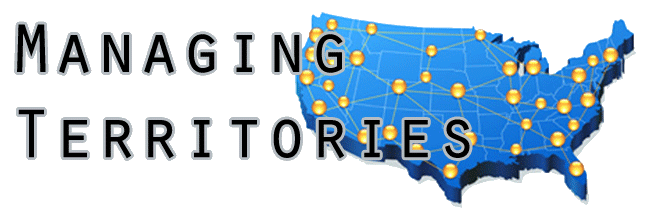Time To Drill Down
Now that you’ve planned your entire universe at a macro level during Trade Coverage Planning, it’s time to take it down to the micro level. This is the primary function of Territory Management. In essence, Territory Management is where you take hundreds, or hundreds of thousands, of customers and assign them in a fairly balanced manner across your sales force.
The goal of Territory Management is to create an efficient and balanced workload for each sales resource. As we mentioned in the first issue of this series, your sales resources could include a variety of Customer Touchpoints including sales reps, telesales/telemarketing reps, customer service or technical reps and management structure. For the sake of simplicity, we’ll limit our topic to only direct field sales territories for this article.
Be Realistic
Remember when we talked about “Effort” in the last issue? Territory Management is where it begins to play an even larger role. The first thing to keep in mind is that you need to establish realistic guidelines for your Effort target. While there are 2080 available hours in a 52 week year with a 40 hour work week, not all of these hours can be assigned for customer coverage. You’ll want to establish guidelines that factor in such things as vacation, meetings, company holidays, etc.
We usually recommend an Effort target around 1760 hours which removes 8 weeks of available time from the assigned Effort pool. We arrive at this number using the following equation.
- Total Weeks (52) – Vacation (4) – Holidays (2) – Misc (2) = 44 Total Weeks
- 44 Weeks x 40 Hours = 1760 Hours
Taking It To The Streets
Now that you have an Effort target you begin to assign actual customers to sales territories. For the sake of efficiency, you’ll want to assign customers in a manner that will enable sales reps to make the greatest number of customer calls with the least amount of travel time. These means geographic proximity is the most relevant factor in assigning customers. Other relevant factors might include the following.
- Government Boundaries – Depending on your industry, state, county and city jurisdictions and regulations may factor into the complexity of crossing certain borders.
- Natural Boundaries – Significant natural barriers such as mountains, lakes and rivers can significantly impact the efficiency of travel.
- Customer Value – Depending on the potential sales or margin contribution of a given customer, it may make sense to assign a more experienced rep or, at the other end of the spectrum, assign no physical visits whatsoever.
Balance Is Relative
As you go through the process, you’ll come to the realization that it’s impossible to achieve perfect balance. You shouldn’t let this cause you too much concern. As we noted earlier, it’s important to be realistic. We recommend an acceptable margin of plus or minus 10% versus the 1760 Effort target. This means your reps assigned hours can range between 1584 and 1936 hours. This provides a relative balance and gives you the required flexibility in considering all relevant factors.
Final Comments
This concludes our instructional series on the customer coverage aspects of Trade Marketing. While much of this was covered at a very high level, we’re more than happy to provide more detail and actual models to those with interest. Feel free to contact us directly using the contact information in the author bio or the information on our website.

